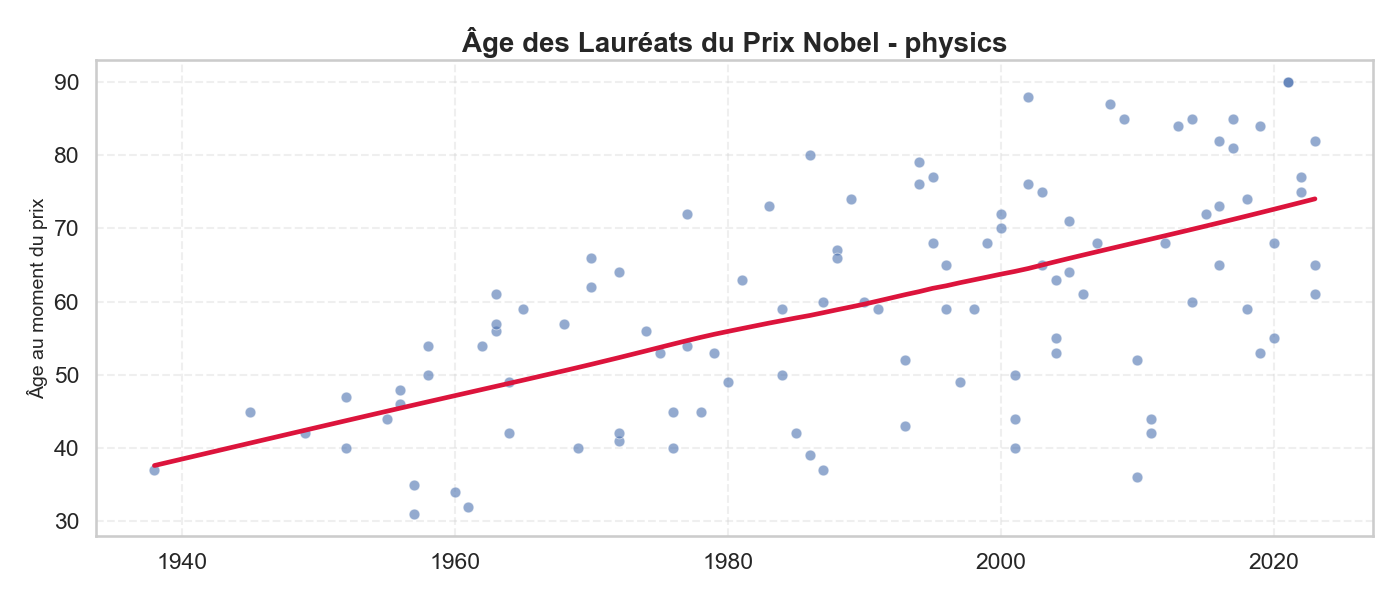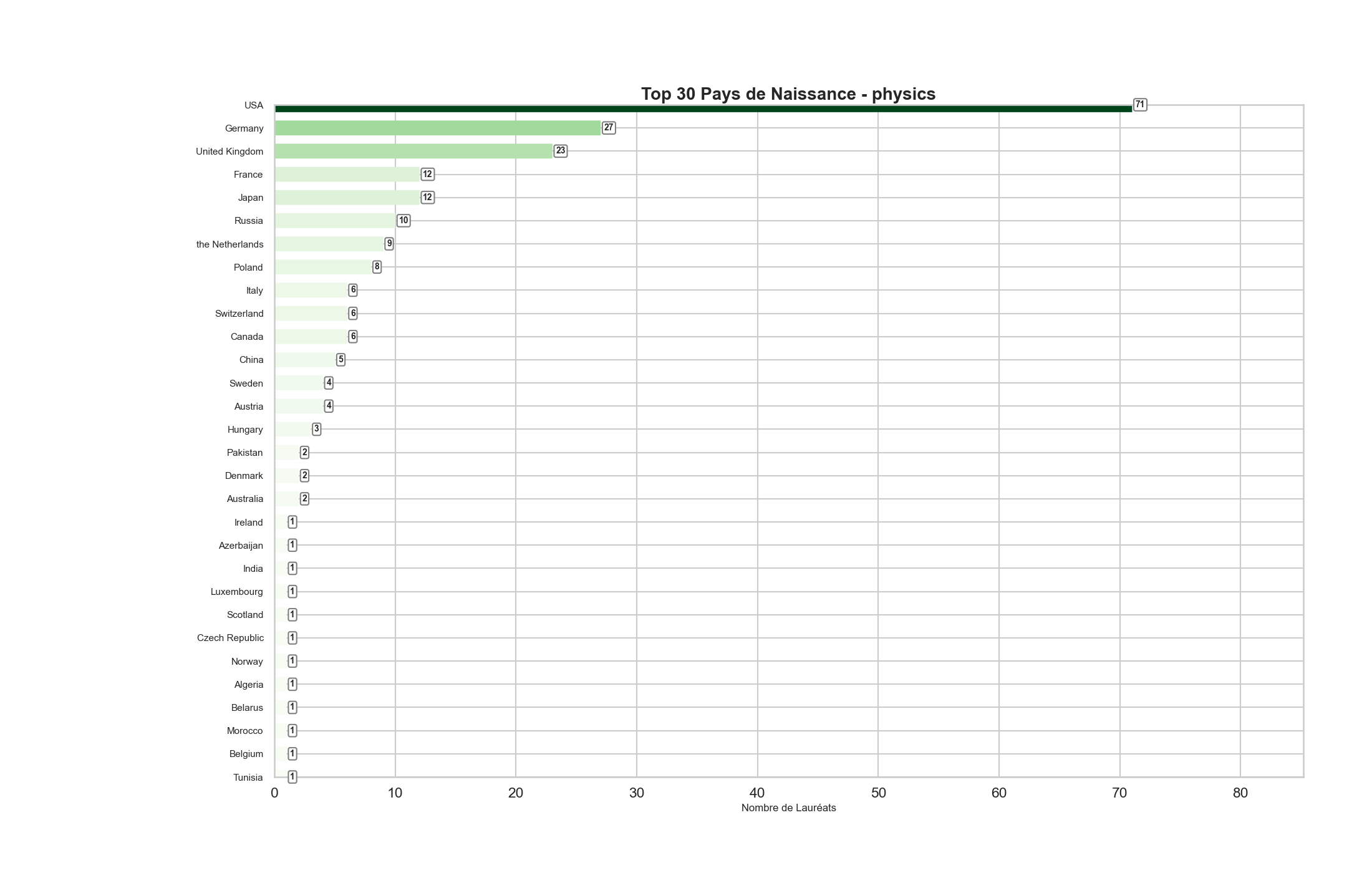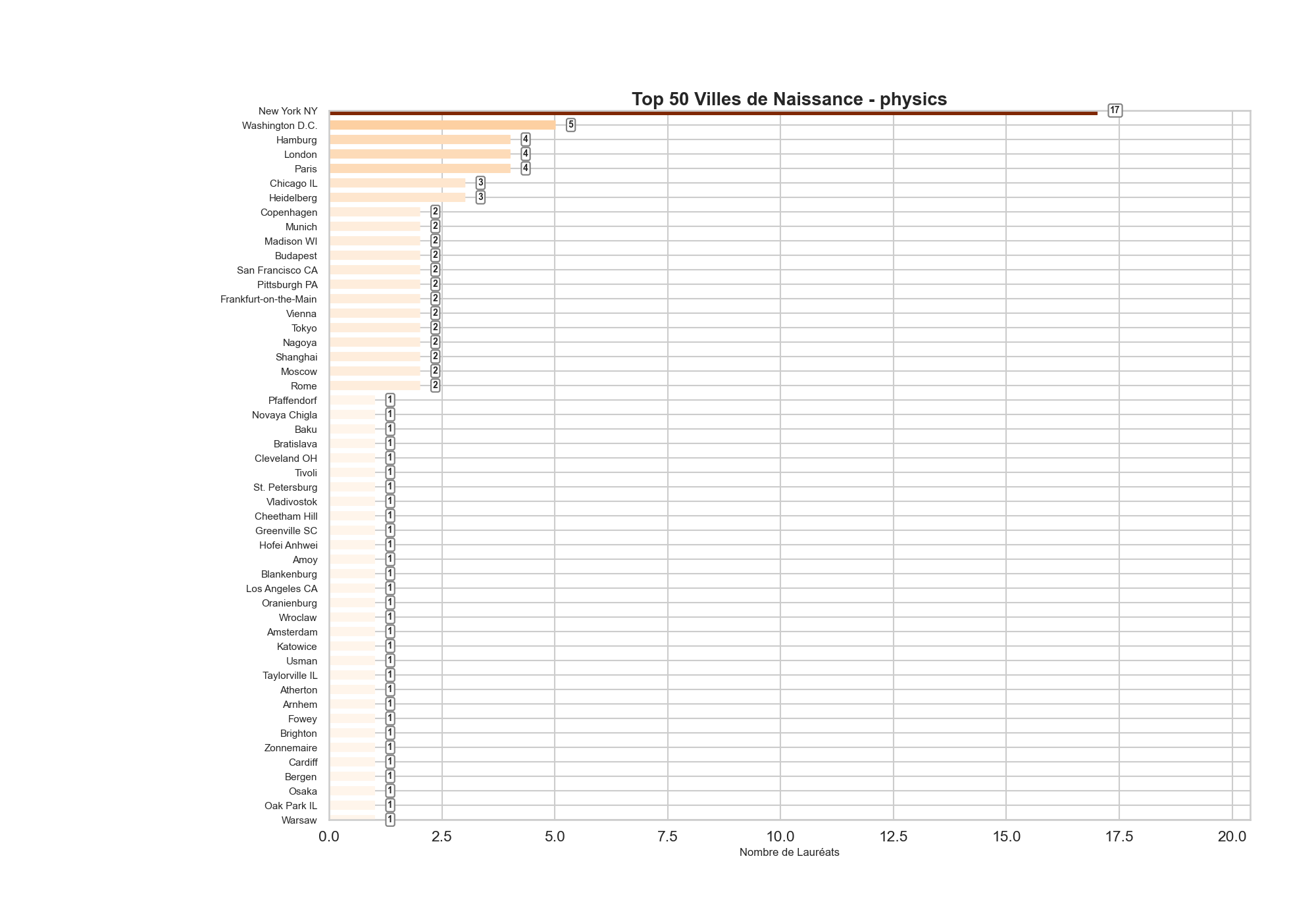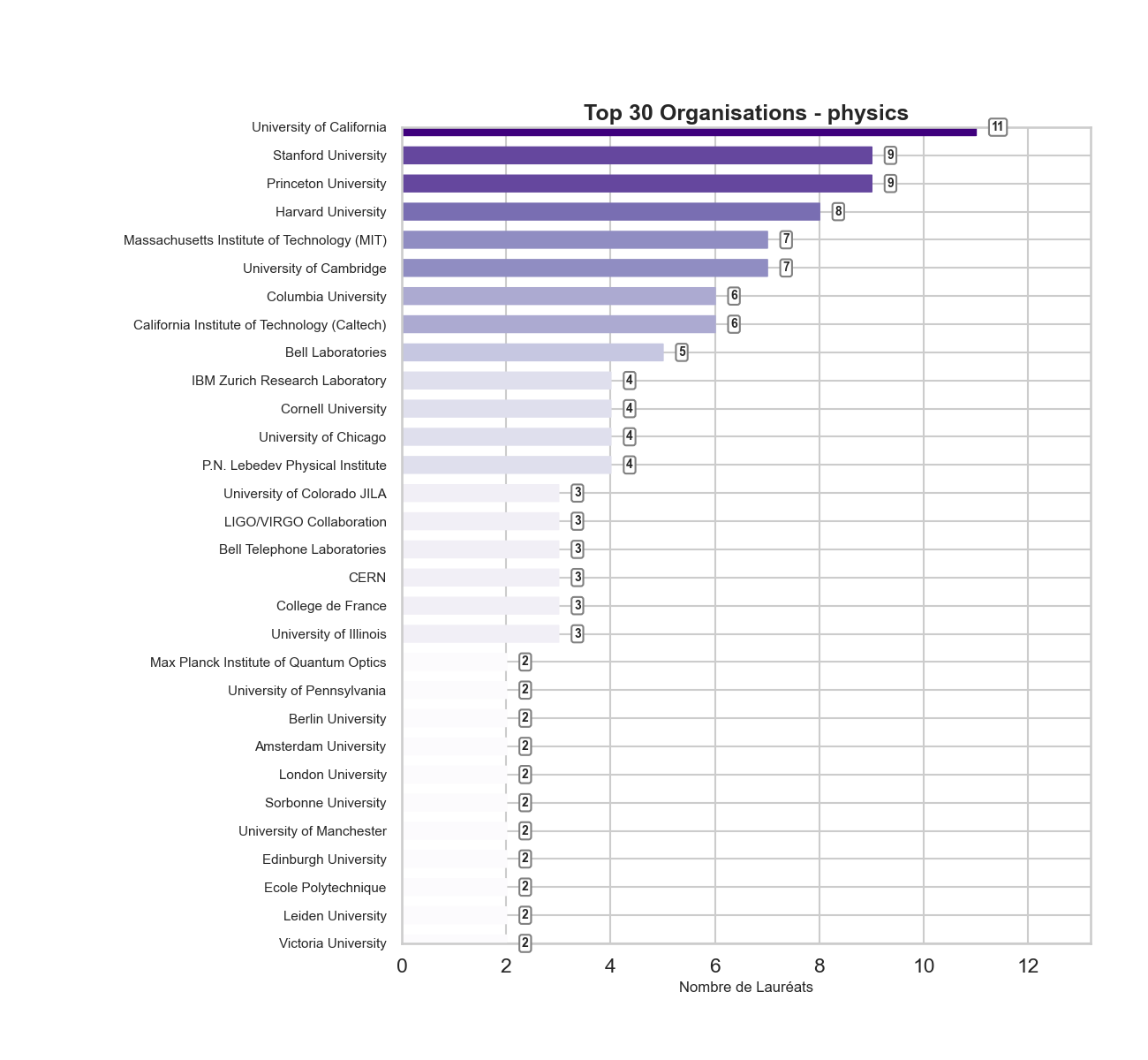
📊 The Economics Nobel Over Time – A Visual and Analytical Deep Dive
The Nobel Prize in Economics tells a story beyond medals. Behind each award lies decades of research, evolving paradigms, and the silent trends shaping modern economic thought.
Pandas, Matplotlib, Seaborn, WordCloudMost economists are awarded between ages 65 and 70 — a reminder that economics is a cumulative and patient science.

The United States dominates the list of Nobel laureates in economics, followed distantly by the UK, Canada, and France.

New York, Boston, and Chicago top the chart — revealing the urban roots of many top economists.

University of Chicago, Harvard, and MIT lead — both as intellectual hubs and symbols of scientific recognition.

Themes such as theory, contribution, analysis, market, and policy dominate official Nobel motivations.

Out of dozens of laureates, only a handful are women — but names like Elinor Ostrom, Esther Duflo, and Claudia Goldin represent crucial steps toward inclusion.

The Nobel isn’t just a celebration of individual achievement. It reflects:
It’s a mirror to how we value knowledge, and a call to keep questioning what — and who — we recognize in science.
📁 Data: Kaggle Dataset - Nobel Laureates
#DataScience, #Economics, #NobelPrize, #Python, #Research, #DataViz, #Matplotlib, #GenderInequality, #AcademicRecognition